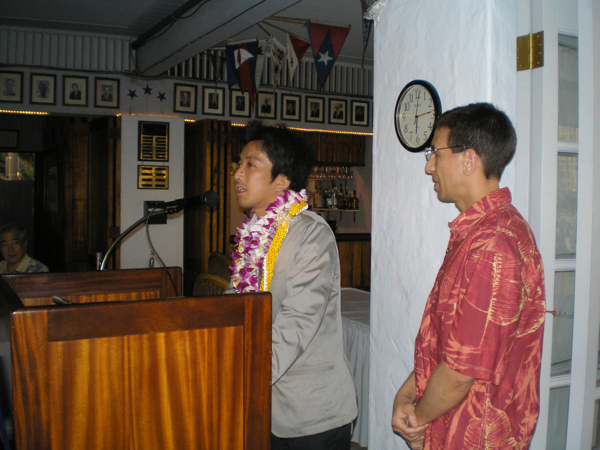
Chris Li translating for Mitsuteru Ueshiba Waka-sensei
Waikiki Yacht Club, Honolulu Hawaii – February 2010
Aikido and the Aikikai, where does it go from here?
Mitsuteru Ueshiba (Waka-Sensei), the great-grandson of Aikido Founder Morihei Ueshiba, made his first visit to Hawaii in February 2010.
Personally, I have been able to train under three generations of the Ueshiba family – some people at that seminar, and many of my instructors, have trained with all four, starting with O-Sensei to Kisshomaru Doshu to Moriteru Doshu to Mitsuteru Waka-Sensei.
Waka-Sensei himself is the first generation of the Ueshiba family teaching Aikido who did not have a chance to meet the Founder.
Among those practicing Aikido worldwide there are many people holding Dan ranks today who hadn’t even begun Aikido when Kisshomaru Doshu passed away.
This means that we are finally getting far enough away from the origin to see what has (and hasn’t) worked organizationally, and for the traditional ties that have bound Aikido together to this time to come to a pivotal transition point.
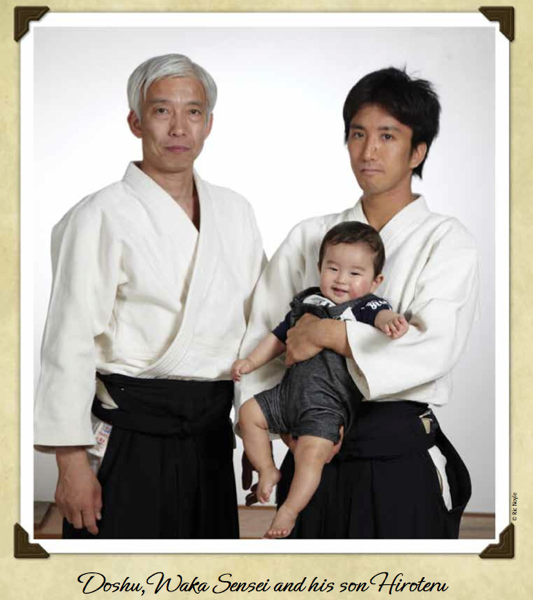
Moriteru, Mitsuteru and Hiroteru
Three Generations of the Ueshiba Family
photograph by Ric Noyle, from the Aikido Celebration Hawaii 2011 brochure
Alexis de Tocqueville, the Frenchman who toured the United States in the mid-1800’s and published his observations in the still classic “Democracy in America”, noted that Americans have a propensity towards forming and joining associations. Of course, this is really more a human trait than one that is specific to the United States.
And so, as the number of practitioners grew and Aikido expanded, organizations, associations and federations were formed.
Sokaku Takeda himself never really had any kind of organization at all, there is some suspicion that even what structure was alleged to exist in Daito-ryu was something created by Takeda himself. In any case, Sokaku Takeda’s son formed an organization after the war, but it was to be less successful (in organizational terms) than the post-war organization spearheaded by Kisshomaru Ueshiba – the Aikikai.
The Aikikai itself has traditionally been organized and administered very much along the lines of a traditional Japanese vertically structured entity. Typically, when the head of such an organization passes away the members tend to split and follow their own paths – the lines of the organization run vertically, but there is usually little binding the individual members together to each other horizontally.
The classic example of this is the splits and fractures that occurred in the Aikikai after the passing of Morihei Ueshiba. More recently, you can see the same thing occurring in smaller organizations in the United States as their leaders pass away – or even in non-Aikikai organizations, as seen in the recent upheavals in the Yoshinkan organization.
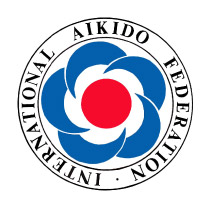
International Aikido Federation (IAF) – 国際合氣道連盟
There is a more horizontally structured organization in Aikido, the International Aikido Federation, which is a mix of both horizontal and vertical structures, but I’m going to leave that aside for the time being.
For one thing, the IAF is an organization whose members are other organizations, not individual Aikido practitioners. For another, the IAF is still hobbled by the one organization per country rule, which means that in many countries – most notably the United States, a significant proportion of the Aikido population, sometimes even a majority of the organizations, are unrecognized by the IAF and cannot be recognized by the IAF until the IAF operating guidelines are changed.
For these reasons, there are many individual Aikido practitioners for whom the the IAF holds little or no relevance – most of the Aikido practitioners in the United States, I would imagine.
Anyway, the IAF has their plate full these days seeing that Aikido students are properly drug tested (also here, on the IAF website) and ensuring that Aikido has a place with other competitive arts in the sporting world (“Sometimes I wonder in which category Aikido falls today. There was recently an event called the Combat games. I feel strongly against the participation of the International Aikido Federation (IAF) to this event. For me it should not even be a topic of discussion because it is obvious that this is not what O sensei wanted. That is not what he passed on to us.” – Yoshimitsu Yamada sensei).
The Aikikai, however, is a horse of a different color. Sometimes it can be unclear, but (for the Aikikai) there is only one person in the entire world who can issue Dan (black belt) promotions – the current Doshu (now Moriteru Ueshiba). Everybody else, whether they be a local fourth-dan instructor or a world famous ninth-dan student of Morihei Ueshiba only issues a “recommendation” for promotion.
Rank, of course, is the biggest (and perhaps only) leverage held by the organization – but for someone who’s interested in it (which ought to be nobody, but in reality is almost everybody), it’s a powerful lever.
If you’re interested in how we got into this fix, I previously wrote a little bit about the origin of the ranking system in Aikido.
Fees, of course, go up the chain to the top (sometimes with occasional stops along the way…).
There are virtually no rules, no regulation, and no oversight, in the Aikikai. It’s possible to do almost anything and still remain a member of the Aikikai as long as you don’t rock too many boats. That’s a good thing, in one sense, as it has allowed the Aikikai to exist as a large umbrella organization in which all of its practitioners maintain some kind of a relationship to the Aikikai and the Ueshiba family.
On the other hand, the fees that head upstream can be substantial, and we are at a point where many are beginning to question the value of that relationship (or have been for some time, in some cases).
In the past most, or all, of the value of an affiliation with the Aikikai was in the relationship.
Shihan X trained at Aikikai Hombu and feels a personal obligation to support them. He pays upstream and maintains a personal connection based upon a personal relationship with Morihei Ueshiba.
Bob, who trains with Shihan X, has no particular personal relationship with Aikikai Hombu, but Bob pays up because his teacher pays up. After all, that’s the deal, and everybody likes to support their teacher.
Bill, who trains with Bob, has no particular personal relationship with Aikikai Hombu, his teacher Bob has no particular personal relationship with Aikikai Hombu, but Bill pays up because his Shihan X pays up (even though he’s one step removed). He may gripe a little bit, but that’s the way it’s done, that’s the way that everybody’s always done it.
Bruce, who trains with Bill, has no particular personal relationship with Aikikai Hombu, his teacher Bill has no particular personal relationship with Aikikai Hombu, Bill’s teacher Bob has no particular personal relationship with Aikikai Hombu, but Bruce pays up because…why?
Not only is Bruce’s relationship to Aikikai Hombu getting exceedingly thin, but it’s more than likely that at this point that Shihan X, and possibly one or two of the other top links in the chain as well, have already passed away.
This is the point that we’re at now in the history of Aikido.
Most Aikido practitioners have never been to Hombu and have no personal relationships there.
They send in money and get (by mail) a piece of paper from someone who has never met them and doesn’t know who they are. Right now, four generations into Aikido, we have a situation in which these ranks are essentially issued by mail order.
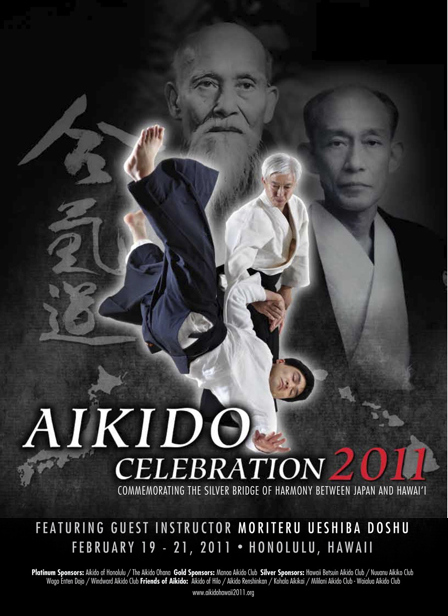
Aikido Celebration Hawaii 2011 Poster
If you put all of the sixth dans in the world in a room, Moriteru Doshu would only recognize a small fraction, let alone know their names. I know that for a fact from having translated for him in Hawaii. That’s not a criticism of the current Doshu himself – but it is a recognition of the fact that there are just too many people in Aikido today, and that it has grown too large, for those personal relationships to be the basis of the organizational link to the leadership of the Aikikai.
But what about “Bruce”, with his very, very slim relationship to the Aikikai? Does he actually receive anything of real value from the organization?
For most Aikido practitioners, the only benefit received from the Aikikai in Japan is that mail order certificate, carefully lettered by somebody in the Hombu Dojo office who doesn’t know who they are.
Yes, the Ueshiba family, Doshu and Waka-sensei, go abroad to teach seminars. But the last time that I saw Moriteru Ueshiba Doshu teach a seminar class abroad (February 2011 in Honolulu) there were almost five-hundred people on the mat, and individual access for most of them was….non-existent. When he taught in Paris in 2004 there were….some three thousand Aikido practitioners there and you can imagine how much time there was for personal interaction.
Yes, there are some other fine instructors at Aikikai Hombu Dojo who also go abroad to instruct – but at this point in the evolution of Aikido there are instructors of equal or higher caliber abroad, and there are a lot more of them, if people would just reconcile themselves to instructors without “cat eyes”.
And yes, the Aikikai was largely responsible for the spread of Aikido overseas and the development of those many instructors, through its efforts to dispatch instructors abroad. However, for many people that is something that is now generations in the past – again, the relationship is stretching thin.
When “Bruce” walks out because he has no personal relationship with the Aikikai and receives little value, it hurts him…very little, if at all.
Most new students have no idea what the Aikikai is and couldn’t care less – I’ve even run into Yudansha who don’t really know what the Aikikai is. Older students stick by their instructor – they’re there because they enjoy training under them, and I know few people who would leave an instructor they enjoy simply because they don’t teach under the Aikikai brand.
But it’s a problem for somebody….it’s a problem for the Aikikai, and one that’s going to be harder to fix the longer things go on, attrition grows, and the Aikikai as an organization becomes something that is no longer relevant to most students of Aikido.
What would I change? I think that is something that would have to be led (but not dictated) by the Aikikai, and endorsed popularly by the membership.
As points for consideration, there are a number of models for successful professional membership organizations that unite people of common goals and interests into a structure that provides real benefits to their members.
There are also a number of models for successful peer review and accreditation organizations that maintain standards of quality and curriculum among educational organizations in a fair and impartial manner – again, providing a real benefit to the members of that organization – and perhaps, providing an object lesson in how to provide meaning for a real licensing system.
One thing that I’m personally fairly confident of – running it as a traditional top down Japanese organization where the main benefit of being in the organization is…being in the organization – isn’t going to work well for very much longer.
Christopher Li – Honolulu, HI

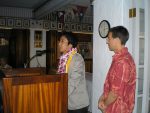
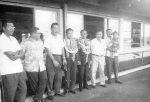



Leave a Reply